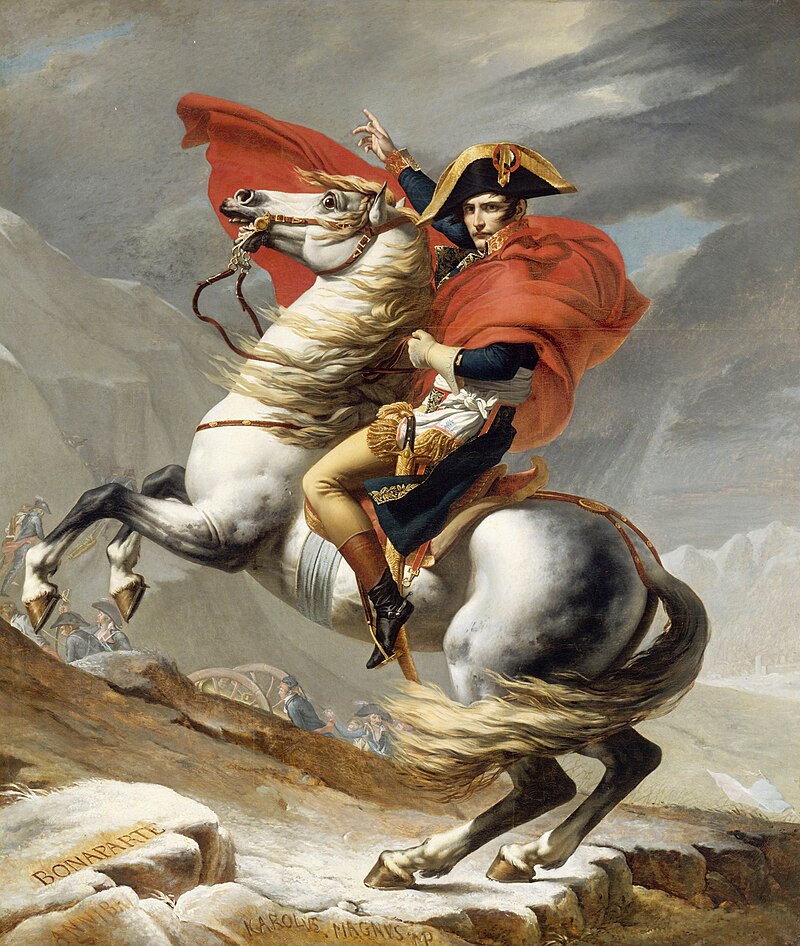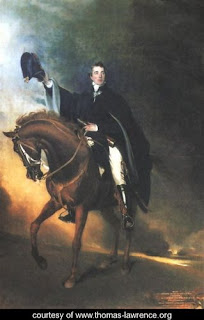 Today we have a guest author, Barbara Monajem.
Today we have a guest author, Barbara Monajem.
Barbara Monajem wrote her first story in third grade about apple tree gnomes. An embarrassing number of years later, she still sneaks magical little creatures into her books, although they’re romances for grownups now. She lives near Atlanta with assorted relatives, friends, and feline strays. I know Barbara through her several wonderful stories for Harlequin Historical Undone.
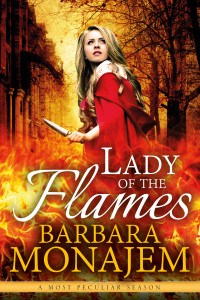 But today Barbara is here to talk about an exciting new book, Lady of the Flames.
But today Barbara is here to talk about an exciting new book, Lady of the Flames.
Magic is fraught with peril—but so is love.
Lord Fenimore Trent’s uncanny affinity for knives and other sharp blades led to duels and murderous brawls until he found a safe, peaceful outlet by opening a furniture shop—an unacceptable occupation for a man of noble birth. Now his business partner has been accused of treason. In order to root out the real traitor, Fen may have to resort to the violent use of his blades once again.
Once upon a time, Andromeda Gibbons believed in magic. That belief faded after her mother’s death and vanished completely when Lord Fenimore, the man she loved, spurned her. Five years later, Andromeda has molded herself into a perfect—and perfectly unhappy—lady. When she overhears her haughty betrothed plotting treason, she flees into the London night—to Fen, the one man she knows she can trust. But taking refuge with him leads to far more than preventing treason. Can she learn to believe in love, magic, and the real Andromeda once again?
Listen to what reviewers say:
“Loved this story from Barbara Monajem with its magic and paranormal happenings nestled in a Regency setting.”
“The story…pulled me in right away and there were no slow spots; I really hated putting the book down.”
“It kept me guessing the entire time… I love historical romances but add in the paranormal aspect and it is perfect.”
“Loved the hobgoblin Cuff.”
To celebrate the release of Lady of the Flames, Barbara will be giving away a novella duet ebook, winner’s choice. The options are The Wanton Governess/The Unrepentant Rake, The Magic of His Touch/Bewitched by His Kiss, or Under a Christmas Spell/Under a New Year’s Enchantment—for either Amazon or B&N.
Welcome to Risky Regencies, Barbara!
Tell us about Lady of the Flames.
It’s a Regency historical romantic suspense with magic. It has a traitor, some French spies, knife magic, fire magic, and a hobgoblin. (And a hero and heroine, of course.)
I understand Lady of the Flames is a part of an exciting series you and several other Historical Romance authors are releasing. Tell us more about this series, how it came about, and the other books in it.
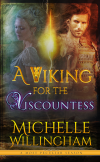 As you can probably tell from the above description, I find it hard to stick to one genre. I share this difficulty with many other authors. No matter how rewarding our relationships with our editors and publishers, sometimes we just want to write whatever we please.
As you can probably tell from the above description, I find it hard to stick to one genre. I share this difficulty with many other authors. No matter how rewarding our relationships with our editors and publishers, sometimes we just want to write whatever we please.
That’s why, when fellow author Deborah Hale suggested a loosely-connected multi-author series, I jumped on the bandwagon right away. Apart from one commonality that defined the series, each author could write whatever she liked. We chose the year 1811, when the Prince of Wales became Prince Regent, and named our series A Most Peculiar Season. The only requirement, apart from the year, was that our stories would be about something that made that London Season a peculiar one. What fun that turned out to be!
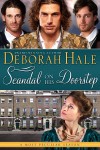 Michelle Willingham writes both Regency and Viking historicals. She combined the two in a time travel story, A Viking for the Viscountess. Deborah Hale’s Scandal on His Doorstep features three rakes who find a baby abandoned on their doorstep—but which of them is the father? I had fun playing with magic in Lady of the Flames. Ann Lethbridge indulged her muse by writing a paranormal romance, Lady Sybil’s Vampire. Gail Ranstrom’s To Tempt a Thief is about a rash of thefts by the elusive Mayfair Shadow. Ann’s and Gail’s will be released soon, and there are more to come after that!
Michelle Willingham writes both Regency and Viking historicals. She combined the two in a time travel story, A Viking for the Viscountess. Deborah Hale’s Scandal on His Doorstep features three rakes who find a baby abandoned on their doorstep—but which of them is the father? I had fun playing with magic in Lady of the Flames. Ann Lethbridge indulged her muse by writing a paranormal romance, Lady Sybil’s Vampire. Gail Ranstrom’s To Tempt a Thief is about a rash of thefts by the elusive Mayfair Shadow. Ann’s and Gail’s will be released soon, and there are more to come after that!
What inspired you to write Lady of the Flames?
I don’t remember! By the time I finish writing a story I have often forgotten what prompted me in the first place. Something pops into my head, and I start writing and see where it leads. That said, I really, really like writing about magic. I’ve done vampires, a human chameleon, a dangerously telepathic rock star, an aura reader, and a ghost. My first Regencies had no magic in them (except, of course, for love, which is a magic of its own), but pretty soon there were hobgoblins, May Day magic, and an incubus and succubus.
Also, I love Second Chance at Love stories. Too much, maybe – more than half of my published stories involve second chances at love, and Lady of the Flames is one of them.
What is risky about Lady of the Flames?
Apart from its being a multi-genre novel and therefore difficult to market, I think the hobgoblin is the biggest risk. He’s a secondary character, but he is mentioned on the very first page. I wanted the reader to know right away what she’s getting into—a story with magic—but for some readers, a hobgoblin may seem too childish a character for an adult romance. Was that a worthwhile risk? Time will tell.
Did you come across any interesting historical facts when researching the book?
I didn’t do much research for this particular book. When writing a story about magic, one has more freedom than usual to make things up! However, the setting of the story is definitely Regency, and I drew upon knowledge I had acquired when researching for other novels – about the furniture of the era (since Lord Fen, my hero, has a furniture shop), parts of London, smugglers, coffee houses, French pastries, and so on. I was a little hard on the British spy-catchers of the time. I’m sure they were much more clever and efficient than I have portrayed them in my book.
What is next for you?
As usual, I’m working on several projects at once. There’s a novella for a summer anthology with some of the other authors at the Embracing Romance blog. The anthology title is Passionate Promises, and my story (so far untitled) involves several of those. I’ve started another novel in the same vein as Lady of the Flames, I’m revising a full-length Regency (without magic), and I’ve also started on the first of a Regency mystery series written in first person – a refreshing change for me.
What do you think would make a Regency season unusual? What peculiarity would you like to read about? Abductions? Dragons? A lion escaping the Royal Menagerie? One lucky commenter will win my novella duet–The Wanton Governess/The Unrepentant Rake, The Magic of His Touch/Bewitched by His Kiss, or Under a Christmas Spell/Under a New Year’s Enchantment—for either Amazon or B&N.
Thanks so much for being our guest, Barbara. Readers do not forget. Make a comment for a chance to win one of Barbara’s duets!
 I’m delighted to announce the winner of Margaret Evans Porter’s giveaway from her guest interview last week. Kristen H is the winner of a print copy of Margaret’s newly reissued romance, The Proposal!! Congratulations, Kristen. We’ll put Margaret in touch with you to work out the details. And thank you, everyone else, for your great comments and for participating. Margaret enjoyed visiting with us and sends her best regards to all.
I’m delighted to announce the winner of Margaret Evans Porter’s giveaway from her guest interview last week. Kristen H is the winner of a print copy of Margaret’s newly reissued romance, The Proposal!! Congratulations, Kristen. We’ll put Margaret in touch with you to work out the details. And thank you, everyone else, for your great comments and for participating. Margaret enjoyed visiting with us and sends her best regards to all.


